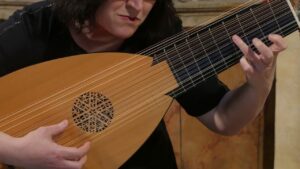Why do so many classical guitarists and sheet music editions use relative lute tuning (tune down the third string to F sharp) and use a capo when playing Renaissance lute music?
The tuning answer is simple, a large amount Renaissance lute music was written in that tuning so the music is often easier to play. Instead of having to fret the F# it is now an open string. Also, the keys chosen often work better due to this fact. Sometimes it’s impossible to play the piece without lute tuning. That said, on rare occasions regular tuning works better. Learning to play in relative lute tuning opens up a world of lute music and allows us to read the original lute tablature. Even the RCM requires it from intermediate level onward so it is an established skill you should learn.
The capo at the third fret puts you even closer to lute tuning which was up a minor third in on many lutes (not all lutes of course). By raising the pitch give the guitar a lighter, brighter sound that contributes to the music (although this could be considered personal preference). Another benefit is that the sound of the open strings and fretted notes are the same as you eliminate the nut from the equation.
Here is the solo piece I mentioned, Ricercare XVI by Francesco Canova da Milano (1497–1543).
Here are the duets I mentioned. The first one has one guitar using a capo and the other not. The second video is actually not possible without the tuning (at timing 2:51 with the rapid thirds and repeated notes).
Find more articles at the Lesson Archive Page. For free lessons, sheet music, and pro videos join the Email Newsletter. Like these lessons? Please consider supporting the site.




